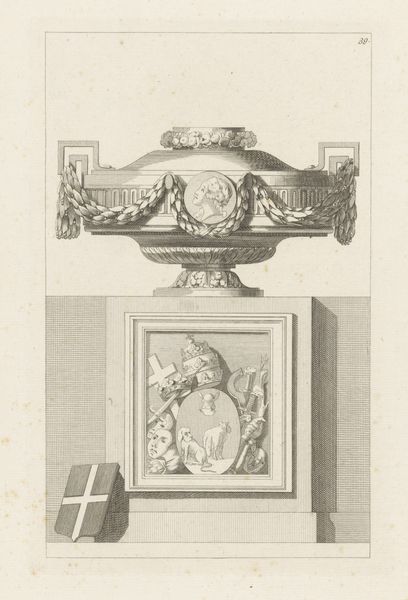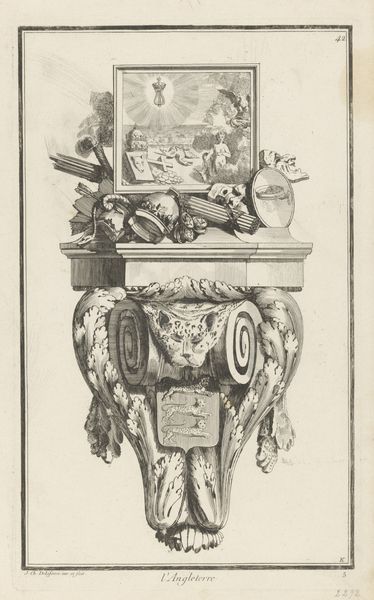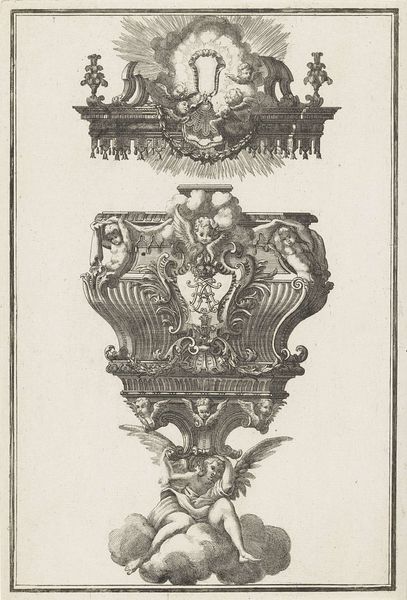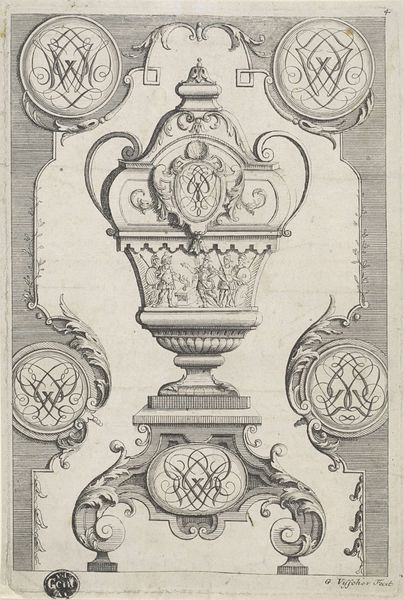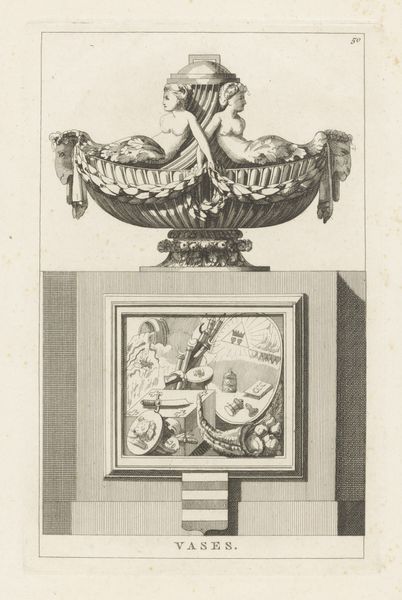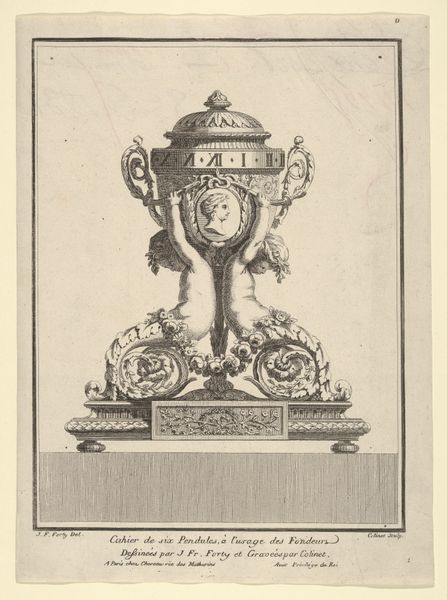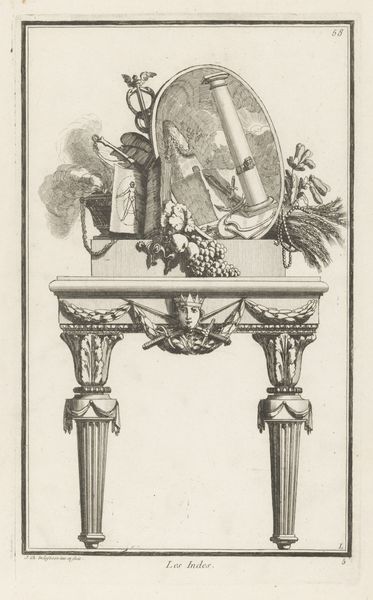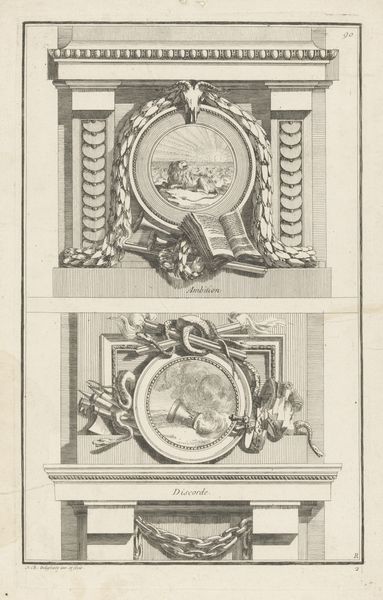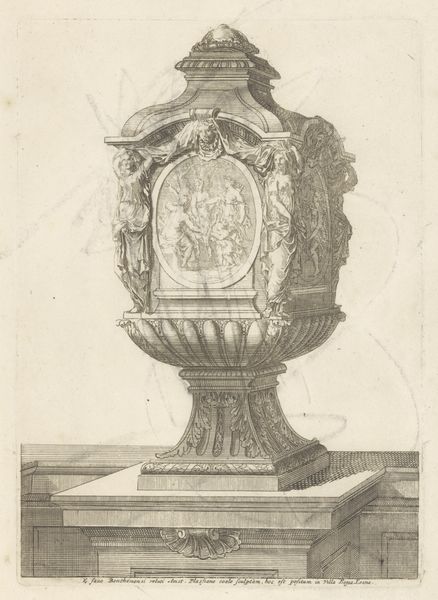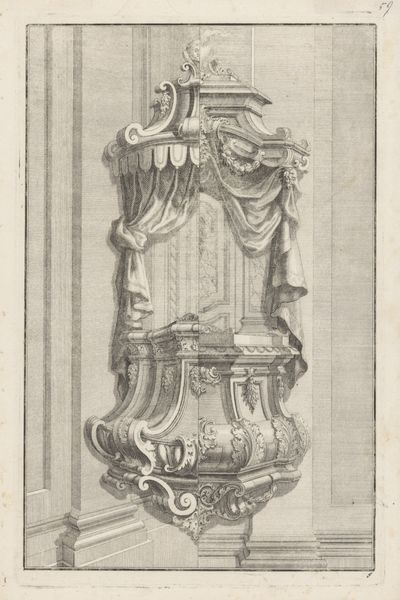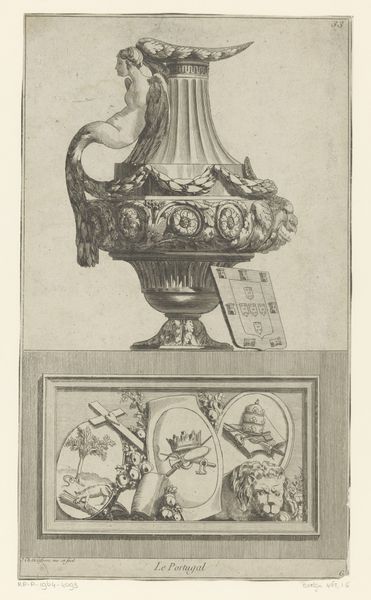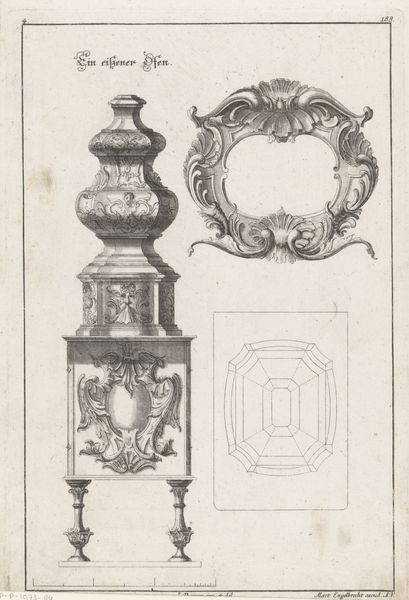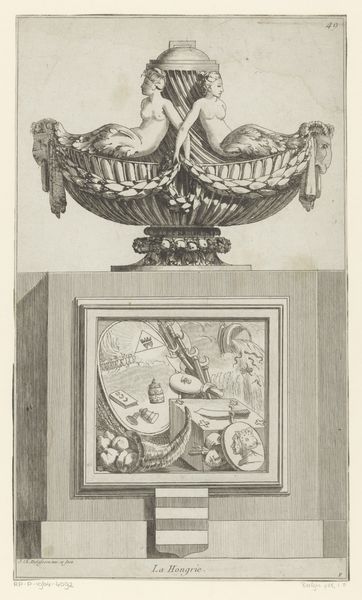
Dimensions: height 374 mm, width 227 mm
Copyright: Rijks Museum: Open Domain
Curator: Well, here's something fascinating. What are your immediate impressions of this print titled "Thracie"? Jean-Charles Delafosse produced this engraving somewhere between 1768 and 1771. Editor: It's like a fever dream from a historical museum gift shop. Ornate, a bit excessive, and yet, weirdly… flat? The level of detail feels at odds with the simplicity of the composition. Is that deliberate, I wonder? Curator: I think you've hit upon a key element. Delafosse, a figure steeped in the aesthetics of the Baroque era, clearly sought to cram a lot of information into this one sheet. It almost reads like an emblem book. He was cataloguing a lot of images and ideas from the antique past. Editor: An emblem book for interior decorators of the 18th century! Those winged figures sprouting from the vase handles give me an eerie mermaid-gone-angel vibe. And below, this swirling chaos in that circular medallion is like the inside of an idea churning. What does it mean to see artifacts as abstract thought? Curator: Consider that classical motifs—vases, medallions, laurel wreaths—weren't just decorative. They symbolized specific virtues, empires, histories. The medley of objects—busts, writing tablets—within the medallion seems intent on evoking the cultural potency of Thrace itself, but in a totally abstracted symbolic language. Editor: A language we’ve mostly lost, I suspect. Looking at it now, there’s something mournful here, as if those symbols, ripped from their original context, are silently pleading for understanding from viewers removed from them in time. Or is it just me projecting? Curator: Not at all. Memory operates this way: fragments pieced together to reconstruct an ideal whole that may or may not accurately reflect what came before. Delafosse's Thracie presents not so much Thrace itself but an evocation of its memory, filtered through 18th-century eyes. It's almost like proto-nostalgia. Editor: So it's both a document and a yearning. Looking at all the little flourishes of a civilization, not an argument. I appreciate the layers of this, thank you! Curator: Yes! The work invites us to appreciate and interrogate the complicated dance between cultural legacy and personal imagination, a reminder that all representations are but a fleeting capture of ever-evolving concepts.
Comments
No comments
Be the first to comment and join the conversation on the ultimate creative platform.

